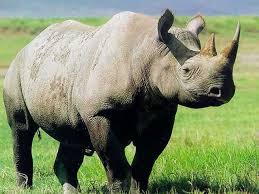Nepal sets example in Rhino Conservation
Kathmandu / Sept 23: Even as poaching of wild animals continues unabated across the country, Nepal has managed to celebrate three years of zero rhino poaching years. Thanks to the combined effort of the government, security forces and locals involved in wildlife conservation, one-horned rhinos have found a better home here in Nepal.
 The first zero rhino poaching year was celebrated in 2011, which was followed by another such year for rhinos, tigers and elephants for the 12-month ending in February of 2014. The country yet again managed to pull off a feat with zero incident of rhino poaching recorded in 2015.
The first zero rhino poaching year was celebrated in 2011, which was followed by another such year for rhinos, tigers and elephants for the 12-month ending in February of 2014. The country yet again managed to pull off a feat with zero incident of rhino poaching recorded in 2015.
The achievements indicate a remarkable turnaround given that 37 rhinos were poached in 2002 alone.
Nepal’s success in rhino conservation has enhanced its reputation as a good habitat for rhinos in South Asia.
“Among South Asian countries, Nepal is known as one of the best country for wildlife conservation. While countries across the globe celebrated World Rhino Day, our achievement must have reverberated among leading international conservation experts,” said Maheshowr Dhakal of Department of National Parks and Wildlife Conservation.
Nepal’s success in wildlife conservation was lauded at Zero Poaching in Asia Symposium held in Kathmandu nearly six months ago. During the week-long program, the 13 Tiger Range Countries, mostly from South Asia, praised Nepal’s efforts and took the success as an inspiration in wildlife conservation.
Meanwhile, a government survey released on May 5 revealed that population of rhinos has increased by 21 percent over the years. The number of rhinos in Nepal’s Terai Arc Landscape has risen to 645 at present from 534 in 2011.
The rhino count was carried out in Chitwan National Park, Parsa Wildlife Rerserve, Bardia National Park, Shuklaphanta Wildlife Reserve and their buffer zones in the Terai Arc Landscape from April 11 to May 2. The counting was done by the government’s DNPWC in collaboration with World Wildlife Fund Nepal and National Trust for Nature Conservation.
Rhino experts at WWF, Kanchan Thapa attributed Nepal’s success in rhino conservation to the combined efforts from all concerned authorities. “Had the government, Nepal Army and various stakeholders, including the locals, failed to work together, this achievement would never have been possible,” said Thapa.
Nepal, which shares the Terai Arc Landscape with India, is home to endangered animals like tigers, rhinos, elephants and Gangetic dolphins. With its rich bio-diversity and rare flora and fauna, the country now has 10 national parks, three wildlife reserves and six conservation areas that cover more than 13,000 square miles.
(Editor’s Note: If you have also done something, which other people could learn and replicate, we are happy to feature your stories. Please contact us at editor@nepalekhabar.com. News Source: www.myrepublica.com)
